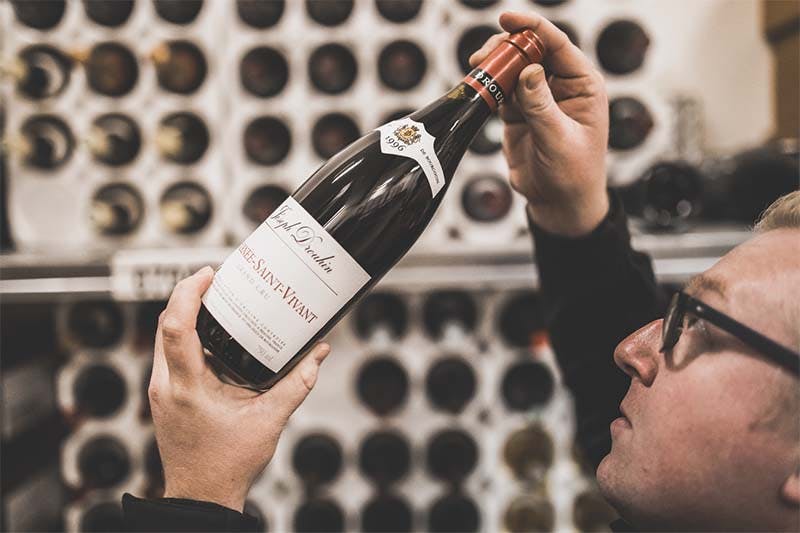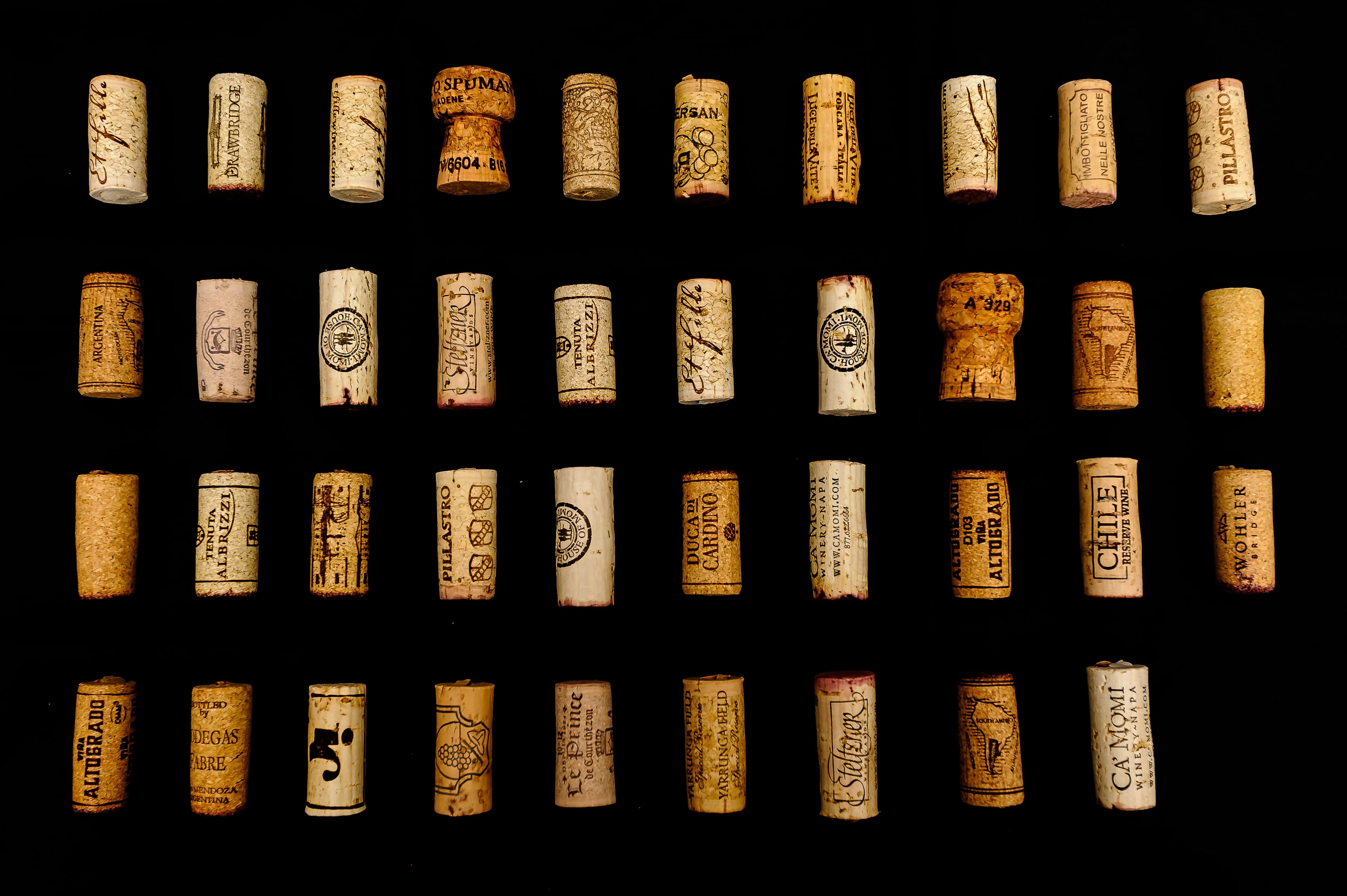
Wine fraud has been a long-standing problem in the wine business. There are various kinds of forgery existing: mixing wines with flavor additives to fake the wine, passing off a cheaper bottling or a lesser vintage from the same producer to a more expensive and sought-after bottle, refilling the recycled original bottles with other wines, and so on. In the world of fine wine, the problem is even more obvious. Among the wine connoisseurs and collectors, certain wines have unlimited value. 1945 Chateau Mouton Rothschild, for example, is considered the most-faked bottle ever. The ungrafted vines and the “greatest vintage of the century” plus the “V” for the victory of World War II make the bottle invaluable. There are only a few bottles like that in the world. Unfortunately, in the secondary market of fine wine, it seems to have way more fine and rare wines being traded than the actual amount that should be existing. The fake bottles never cease to circulate. According to Maureen Downey, the world's foremost expert on counterfeit wines, approximately 20 percent of the fine wines traded are counterfeit. Over the years, wine producers and fine wine experts made a huge effort to fight against wine fraud. In 2013, the most notorious wine forger in history, Rudy Kurniawan was convicted and imprisoned, who was known as “Doctor Conti” among fine and rare wine collectors, for forging and selling counterfeit wines.
Behind the high-profile scandal, the counterfeit wines in the market are, in fact, not just rare bottles. In Asia, Penfolds Grange and 707 are among the most counterfeited wines, along with Chateau Lafite Rothschild. The commercialized wine brands with great success in the market suffer from rampant wine fraud. As wine lovers and fine wine collectors, what are the ways we can look out for, to spot counterfeit wine? In this article, we summarized several ways to check if a bottle is legit, from the past cases of wine fraud and the experience of wine authentication experts, to help wine lovers and collectors become more sensible about the authenticity and the traceability of the bottles.
1. Always watch out for unicorn wines
What is a unicorn wine? The term emerged in the mid-2010s on social media among sommeliers. To put it in simple terms, unicorn wines are bottles not necessarily the most expensive but are extremely rare. Those wines are often produced only on certain vintages in limited quantities, from prestigious estates or legendary winemakers, and are hard to find. For example, all the Domaine Romanee-Conti wines, Henri Jayer, old vintage Barolo from Cantina Mascarello made by Bartolo Mascarello himself, and some particular vintages of Bordeaux first growth like 1945, 1947, 1949, 1811 Chateau d’Yquem, the aforementioned 1945 Chateau Mouton Rothschild. The list goes on and on but in today’s secondary market, the available quantities of these wines are way beyond their scarcity.
In fact, the fake unicorn bottles were how Rudy Kurniawan’s scam surfaced with actual proof, after years of his deception of the wine professionals, connoisseurs, collectors around him. In 2008, Rudy Kurniawan’s collection of 1945 Domaine Ponsot “Clos St Denis” was auctioned by Acker Merrall in New York. The owner of the Burgundy estate at that period, Laurent Ponsot, went all the way across the Atlantic to stop the wines from being auctioned. As the estate acquired the Clos St Denis vineyard several decades later, and only produced its first bottling in 1982. Other examples include anything Domaine Romanee-Conti from 1946 to 1951 are fake without question, as the estate didn’t produce any bottles during that period of time; or a large format of 5 liters of 1945 Cheval Blanc because the size was only introduced to Bordeaux since 1978 and the wines should not be existing.
2. Carefully read the label
The wine label tells you more about the bottle than you think, from the spelling of the technical information to the paper, the ink, the printing techniques. The most direct way to check the wine label is to compare the texture of the paper. Paper has evolved over time, with an “ultra-white” formula introduced in 1957, clarified by Maureen Downey. This fluoresces under blue light, so if you find an ultra-white label on a bottle of 1945 vintage, it's highly likely to be a forgery. For old vintage bottles, counterfeiters create the age of the labels make the new labels look older. Look closely for the artificial signs of age, such as tobacco stains, dirt from shellac, the characteristic grooved marks from sandpaper. Oxidation is a steady process. The real old vintage wine label should oxidate evenly on every corner of the paper.
Look closely at the spelling. Sometimes less prudent wine forgers made small mistakes with the spelling, such as the misspelling of the appellation name, the absence of accent marks on some letters, or the inconsistent of the font in the same word with the accented letters. Pay attention, the name of the Burgundy grand cru “Échezeaux” appears differently on wine labels of different producers, with or without the accent mark on the second letter e.
Most fine wine labels are printed on a plate press, so the color separation from a three-color screen process, or the squared edges from a dot matrix, differences are noticeable. This is how wine authentication experts work. Even not with professional tools, a magnifying glass can be useful. Many fine wine producers applied anti-fraudulent techniques to fight against wine fraud by adding small print or incorporating special watermarks.
3. Check the glass bottle
The glass bottle is also a good indicator of the authenticity of the wine. Maureen Downey mentioned in a documentary, that she examined a fake bottle of Petrus, the first thing she noticed, was the bottle being far too light than usual. Hand-blown bottles made in the 19th-century wobbles on a flat surface. From the 1930s onwards, French wine bottles should have the capacity embossed on the glass, for example, 75cl. However, the tricky thing about glass bottles is, oftentimes, the counterfeiters collect the empty original bottles from restaurants or individuals, and refill them with fake wines.
4. Look into the cork
Fine wine producers normally use premium quality, natural corks to seal the bottles. Premium corks are usually 52 to 55mm long, branded rather than inked. Producers like Gaja from Piedmont, for example, use long corks to fill in the bottlenecks. If the cork is shorter than 50mm or appears to be agglomerate or synthetic from a prestigious producer, the bottle could be suspicious. Examine the cork for 'Ah-so' marks, which are grooves left on the side of the cork by a two-pronged cork puller used to open old vintage bottles. Nevertheless, if the vintage indicated on the cork does not match with the vintage of the wine, it does not necessarily mean that the wine is fake. Some producers keep the old vintage wines in their cellar for decades, refill and re-cork the wine after a period of time. That can be the reason why a 1979 Chateau Beychevelle has a cork of a 2002 vintage. It could be, on the other hand, a good sign for better storage of the wine.
5. Examine the capsule
Food packaging laws have mandated a transition from lead to tin to aluminum over the years. If the capsule has several creases, it has most likely been reapplied. Other identifiers include thumbprints on wax capsules, residue from a previous closure, even a recycling logo. An old bottle from the 1940s should not have a modern aluminum capsule with a recycle logo. Another factor to look out for is the consistency of the capsule and the label. Under the same storage condition, if the label shows multiple signs of aging, but the capsule is new, it is probably a refilled fake bottle.
6. Confirm the glue
Glue staining is common on old vintage labels. Each producer also employs a distinct method of applying glue. Many fake wines are spotted because they had the incorrect type of glue application for the vintage or producer. The classic 'white' glue has been in use since the 1960s and, like the ultra-white paper, fluoresces under blue light. Be wary of glue stains around label edges, nicks, and tears, and under capsules – all of these are red flags.
7. Look closely at the wine sediment
For red wines that lived for a certain amount of time, sediment should be present. As wine is a naturally made, agricultural product, wine sediment is hard to fake. The sediment in wine evolves with time. Check the appearance of the sediment. Natural sediment should be fine and consistent. Too chunky of the sediment often means it is artificial. And some fake sediment sparkles like glitter under the light.
8. Get the facts straight
Last but not the least, some counterfeiters didn’t bother to check the facts or the wine laws. For example, a 1971 Barolo from Bartolo Mascarello should have the DOCG sign on the bottle, as the DOCG of Barolo only exists after the year 1980. Similar examples can find with Gaja’s Darmagi Cabernet Sauvignon, the older vintages of the 1980s marked “Vino da Tavola” (table wine) on the label, instead of Langhe DOC, as it was non-existing back at that time. Another fake bottle detected by the wine authentication expert is a bottle of Coteaux Champenois Blanc de Blancs from Laurent Perrier with the green tax-paid sticker on top of the capsule. The seller claimed it was collected during World War II and should be from 1941. However, the tax-paid capsule-congé on top was only introduced in 1960.
So, is it possible to taste the fake wines? The answer is no. The taste of wine evolves with time, and there are simply too many variables to affect the taste of the wine. It is also not feasible as it requires opening the bottle or at least piercing the cork with Coravin. In Rudy Kurniawan’s case, he took notes on the fine and rare wines, memorized the taste of the wines, and fabricate the fake bottles that resemble the taste of the authentic ones by mixing cheaper wines and refilling in the original bottles. Even the paper he used for some of the wine labels is the same as the producer used.
Even though wine forgery is a lucrative business, most counterfeiters do not have that level of sophistication. To avoid counterfeit, the best way is to buy directly from the winery. However, due to the rarity of certain wines, it is not always possible. Finding a trustworthy wine merchant with absolute zero wine fraud scandal could guarantee the source of the wines. In the fine wine business, it is safer to pay a bit more for a less-traded bottle, for the traceability as well as better storage condition, than to buy bottles from questionable sources with a good price. The certification of authenticity paper is not always reliable as the master wine forgers are capable of faking the bottle, let alone fake a piece of paper.
In conclusion, as Maureen Downey suggested in her interview, if you look at one single aspect of all the points mentioned above, it may appear logical. But as wine is an “alive” product, the bottle should tell a story. The process of authentication is to put all the pieces together to see if the story stands. If there is any inconsistency in that story, take a closer look at other aspects and ask questions about the provenance of the bottle. For the most sought-after wines, always compare the details with the same bottling, checking the paper of the label, the ink the printing, the font, the glass bottle, the capsule and see if anything is out of the ordinary or incorrect. With the development of technology, producers have been introducing new ways to combat counterfeit wines, by putting chips under labels, using tamper-proof capsules, and most recently, incorporating NFT in wine.
Share this article











